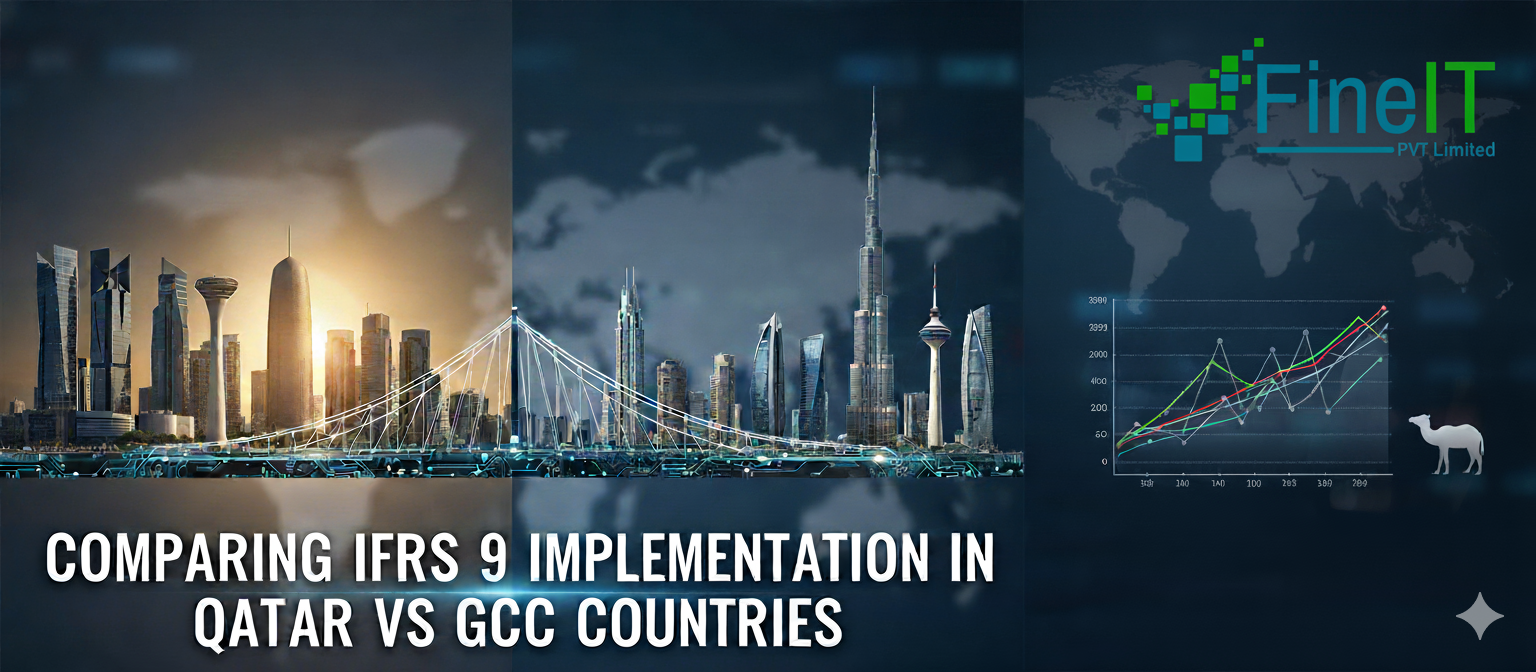The global financial landscape has been significantly reshaped by the introduction of International Financial Reporting Standard 9 (IFRS 9), a standard issued by the International Accounting Standards Board (IASB) that addresses the accounting for financial instruments. Its core objective is to provide relevant and useful information to users of financial statements, primarily by introducing a forward-looking expected credit loss (ECL) model, revised classification and measurement requirements, and new hedge accounting guidance.
While IFRS 9 is a global standard, its implementation across different regions presents unique challenges and nuances due to varying regulatory environments, economic conditions, and existing financial infrastructure. This article delves into a comparison of IFRS 9 implementation in Qatar versus the broader Gulf Cooperation Council (GCC) countries, highlighting key similarities, differences, and their implications.
The GCC Context: A Diverse Financial Ecosystem
The GCC comprises six member states: Bahrain, Kuwait, Oman, Qatar, Saudi Arabia, and the United Arab Emirates. While unified by geographical proximity and economic ties, each country possesses a distinct financial market maturity and regulatory framework. The banking sector, a significant component of their economies, has been at the forefront of IFRS 9 adoption.
Generally, GCC countries faced similar initial challenges:
- Data Availability and Quality: The ECL model requires extensive historical and forward-looking data, which was a significant hurdle for many institutions, especially regarding granular credit risk information.
- Methodology Development: Designing and validating robust ECL models, including probability of default (PD), loss given default (LGD), and exposure at default (EAD) parameters, demanded considerable technical expertise.
- Systems and IT Infrastructure: Significant upgrades to IT systems were necessary to process the vast amounts of data and perform complex calculations required by IFRS 9.
- Talent and Expertise: A shortage of skilled professionals in risk modeling, data analytics, and IFRS 9 accounting posed challenges for effective implementation.
Qatar’s Approach: A Focus on Stability and Regulatory Guidance
Qatar, with its rapidly developing financial sector and strong regulatory oversight from the Qatar Central Bank (QCB), has approached IFRS 9 implementation with a clear emphasis on ensuring financial stability and transparency.
Key aspects of Qatar’s implementation have included:
- Proactive Regulatory Engagement: The QCB provided extensive guidance and support to financial institutions, often issuing circulars and engaging in direct consultations to clarify interpretations and best practices. This proactive stance helped streamline the adoption process.
- Emphasis on Prudential Requirements: Beyond accounting, the QCB focused on the prudential implications of IFRS 9, ensuring that banks adequately provision for credit losses and maintain sufficient capital buffers.
- Leveraging Existing Infrastructure: Qatar’s relatively concentrated banking sector, often characterized by strong government backing, allowed for more coordinated efforts in data collection and system upgrades.
- Focus on Real Estate and Project Finance: Given Qatar’s significant investments in infrastructure and real estate, the application of IFRS 9 to these specific portfolios received particular attention, especially regarding forward-looking economic scenarios impacting these sectors.
Distinguishing Factors Across GCC Countries:
While Qatar’s implementation journey shares commonalities with its GCC peers, certain distinctions emerge:
- Pace of Adoption: Some GCC countries, particularly those with larger and more internationally integrated banking sectors like the UAE and Saudi Arabia, might have initiated their IFRS 9 readiness earlier due to greater exposure to international reporting requirements. However, Qatar maintained a steady and consistent pace guided by its central bank.
- Economic Scenarios: The specific forward-looking economic scenarios used in ECL calculations vary. Qatar’s models would likely place a strong emphasis on global energy prices, government spending, and large-scale project developments, whereas other GCC nations might incorporate broader regional geopolitical factors or diverse economic drivers.
- Regulatory Prescriptiveness: While all GCC central banks provided guidance, the level of prescriptiveness varied. Some, like the QCB, offered detailed instructions, while others allowed for more discretion within the broad framework of IFRS 9.
- Impact on Financial Statements: The initial impact of IFRS 9 on equity and profit and loss statements differed across institutions and countries, largely dependent on the size and quality of loan portfolios, existing provisioning methodologies, and macroeconomic assumptions.
Challenges and the Path Forward:
Even after initial implementation, both Qatar and other GCC countries continue to grapple with ongoing challenges:
- Refinement of Models: Continuous refinement and validation of ECL models are essential to ensure their accuracy and responsiveness to evolving economic conditions.
- Integration with Business Strategy: Moving beyond mere compliance, integrating IFRS 9 insights into strategic decision-making, such as loan pricing, credit risk management, and capital allocation, remains a key objective.
- Digital Transformation: Leveraging advanced analytics, artificial intelligence, and machine learning to enhance data processing, model accuracy, and reporting efficiency is a growing focus.
- Harmonization and Consistency: As the region’s financial markets become more integrated, ensuring greater harmonization and consistency in IFRS 9 application across GCC countries will be crucial for regional financial stability and comparability.
Conclusion:
IFRS 9 has undeniably brought about a significant transformation in financial reporting across the GCC. Qatar, with its robust regulatory framework and focus on economic stability, has navigated this transition effectively. While the core principles of IFRS 9 are universal, the localized implementation strategies, influenced by national economic priorities and regulatory approaches, underscore the unique financial characteristics of each GCC member state. The ongoing evolution of financial markets will necessitate continuous adaptation and refinement of IFRS 9 practices, ensuring that financial reporting remains transparent, reliable, and relevant in a dynamic global economy.
At FineIT, we specialize in helping financial institutions across Qatar and the GCC design, validate, and optimize their Expected Credit Loss (ECL) models, enhance data governance, and ensure full compliance with Qatar Central Bank (QCB) and IFRS 9 requirements.
Let’s make regulatory compliance your competitive advantage.



